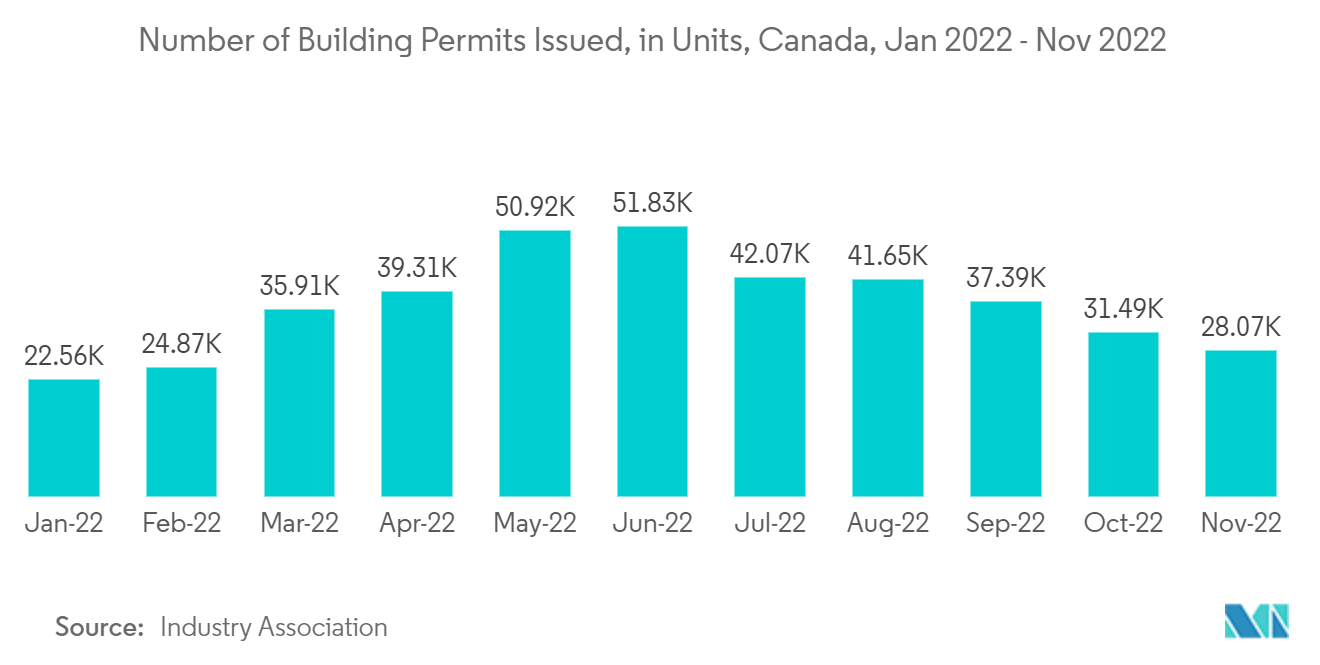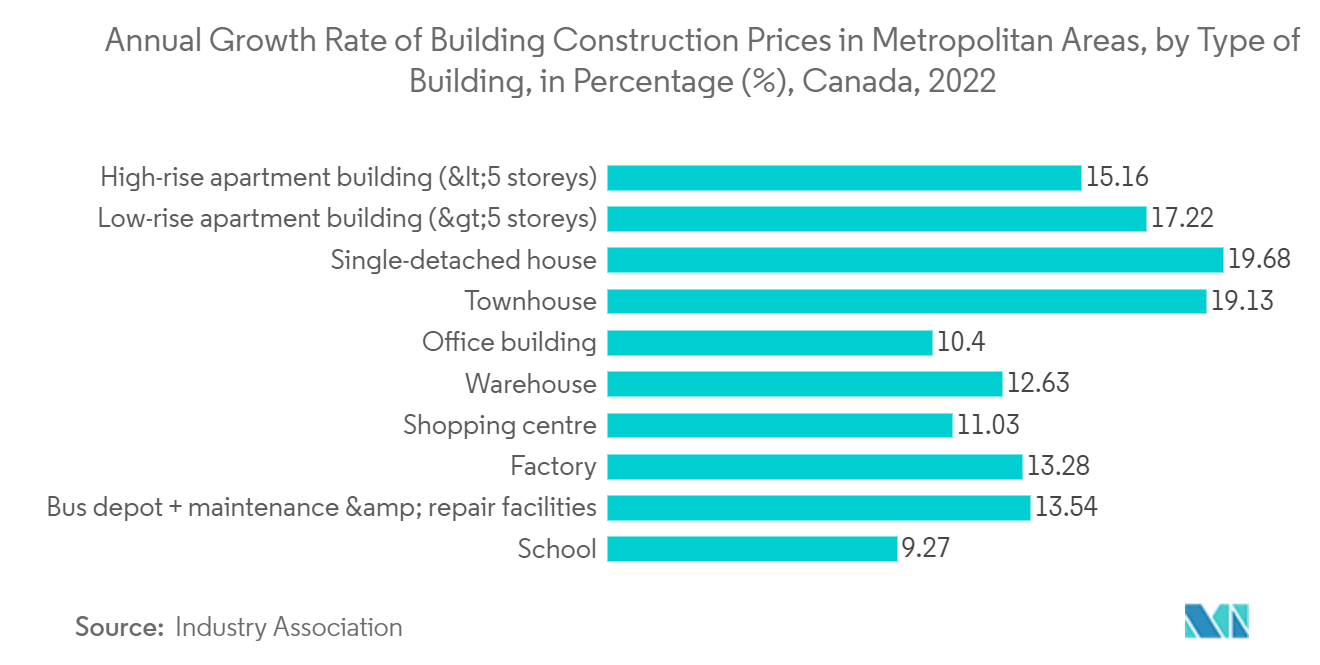Market Trends of Canada Residential Construction Industry
This section covers the major market trends shaping the Canada Residential Construction Market according to our research experts:
Drop in Building Permits Due to High Interest Rates
In a climate of climbing interest rates and high inflation, Canada is seeing a notable drop in building permits. According to Statistics Canada (StatCan), the value of Canada's building permits fell by the most on record in September 2022 - a clear indication of the trying economic times. According to StatCan data, the total value of building permits for the month plummeted a dramatic 17.5% from August 2022 to USD 10.2 billion. This marks the sharpest monthly decline on record. Quarterly, the country's building permits were down 6.3% between July and September - to USD 33.7 billion - after three consecutive quarters of increases. Year-over-year, the overall value of permits issued in September was down 2.5%. The notable drop was seen in both residential and non-residential sectors, with both sectors posting declines for the first time since September 2019. In the residential sector, permits dropped 15.6% from the previous month to USD 7.04 billion. This was weighted heavily by a drop of 21.2% in multifamily dwelling permits, a figure that is largely attributed to a 40% drop in Ontario from a record-high in August. Meanwhile, construction intentions for single-family homes dropped 7.7%, with notable declines in Ontario, Manitoba, and Alberta.
Canadian building permits slipped for a second month in a row in October 2022, driven by a drop in the residential sector. The total value of building permits for October fell 1.4% from the previous month to a seasonally adjusted CAD 9.99 billion (USD 7.42 billion). On a year-over-year basis, the overall value of permits issued in October was down 6.3%. According to StatCan, building permits provide an early indication of construction activity in Canada and are based on a survey of 2,400 municipalities, representing 95% of the country's population. The issuance of a permit doesn't guarantee that construction is imminent. Intentions to build multi-family dwellings were 6.9% lower, while intentions for single-family homes were down 5.8%. The drop in permits is likely a reflection of fewer people looking to get into the market at present time, due to interest rates that render the possibility of a mortgage unrealistic to countless Canadians. In November 2022, the Bank of Canada raised its overnight lending rate by 50 points to 3.75% and indicated that it could expect even more hikes. So, it won't be entirely surprising if a further drop in permits is seen in the months ahead.

Slow Down of Construction Cost Growth
In the third quarter of 2022, residential building construction costs increased 2.5%. The growth was slower than in the second quarter, where residential construction costs grew 5.3%. The rate of growth for residential building construction costs has notably slowed when compared to the past year and a half. Contractors attributed part of the growth in building construction costs to skilled labor shortages and high labor costs. Despite a decline in the number of vacancies for construction jobs from April to July, the vacancy rate remains high, which has kept upward pressure on wages in the industry. Labor contract renegotiations also contributed to higher labor costs in the third quarter. Additionally, higher material costs, amid the limited availability of materials and equipment, particularly concrete, steel, glass and piping, contributed to higher costs. Contractors also noted that fuel prices continue to add upward pressure on construction costs.
Growth in residential building construction costs decelerated during the third quarter, with 10 of the 11 census metropolitan areas (CMAs) recording smaller quarterly increases than the previous two quarters. This slowdown was largely driven by declining softwood lumber prices that have materialized amid a downswing in US housing construction. Costs to construct residential buildings increased the most in Toronto (+4.2%) in the third quarter, followed by Vancouver (+1.9%) and St. John's (+1.7%). In Saskatoon, although high-rise residential building construction costs rose, declines in costs for single-detached houses and townhouses allowed Saskatoon to be the only CMA where residential building construction costs declined in the third quarter (-0.1%). Construction costs for residential buildings rose the most in Toronto, where costs for building low-rise apartments were the highest. By building type, high-rise apartment building construction costs recorded the greatest increase (+3.0%) in the third quarter of 2022, led by Toronto (+3.9%), and followed by Vancouver and Calgary (each up by 2.0%). Single-family homes were the buildings with the highest construction price increase in Canada in 2022.


